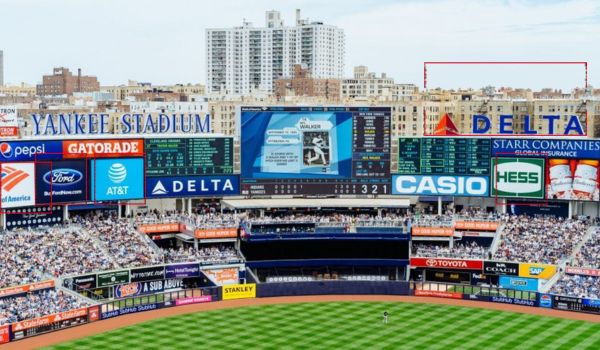Sponsorship serves as a powerful lever, however, sports sponsorship is in a league of its own. Fans are deeply invested, emotionally charged, and fiercely loyal, making it a unique space for brands to connect. This dynamic broadens a brand’s reach and offers global positioning on a larger stage.
Even Emirates Airlines became the official shirt sponsor of Arsenal Football Club, the partnership wasn’t just logo placement on a jersey. Emirates leveraged Arsenal’s global fan base and deep-rooted football culture to position itself as a premium, world-class brand. This is a prime example of how sponsorship is much more than recognition, it’s about emotional engagement, brand storytelling, and alignment with shared values.
Despite sponsorship’s undeniable emotional and brand-building benefits, measuring its ROI is critical to ensuring these initiatives drive concrete business value. Companies like Coca-Cola and Nike, which consistently invest in high-profile sponsorships, rely heavily on data to evaluate the return on their partnerships.
Sports Sponsorship often demands staggering investments, covering rights fees, activation costs, and ongoing promotional campaigns. Without a structured measurement framework, businesses can struggle to connect these expenses to key outcomes such as increased sales, improved brand perception, or heightened customer engagement.
In this blog, we examine all these factors and offer an in-depth guide on measuring sports sponsorship ROI.
Key Metrics for Measuring Sports Sponsorship ROI
Sponsorship really requires the brand to invest staggering amounts of money to make a profound impact. However, measuring the return on investment (ROI) of sports sponsorships is crucial for brands aiming to assess the effectiveness of their marketing endeavors.
A comprehensive evaluation encompasses several key metrics, each providing unique insights into the sponsorship’s impact.
Some of them are discussed below.
Brand Awareness & Recall Surveys
When it comes to measuring how effective a sponsorship is, brand awareness and recall surveys are key. These surveys help us understand how well the sponsorship has made the brand more recognizable to the target audience. They check how much consumers remember or recognize the brand after being exposed to it through the sponsorship.
If people can easily recall the brand without any prompts (known as unaided recall), it’s a sign that the sponsorship made a strong impression. If they need a little help to remember it (aided recall), it shows that the brand is still on their radar, just maybe not at the top of their mind.
For example, a study on Formula One racing showed that there was a clear connection between a team’s performance and the exposure of their sponsor brands, which just goes to show how important it is to partner with high-visibility events to boost brand recognition.
Media Value & Impressions
When you’re evaluating media value, you’re basically trying to measure how much exposure a brand gets across different channels like TV, print, and digital platforms. This helps translate that visibility into a dollar amount, essentially estimating how much it would cost to get the same amount of advertising elsewhere.
A key part of this is looking at impressions, which represent how many times people see the sponsorship. With the help of AI technologies, brands can track and analyze this in real time, allowing them to adjust and improve their media presence as needed.
For example, with digital streaming becoming more popular, brands now have even more opportunities to reach a global audience, which means even more potential impressions.
Social Media Engagement
Being known and recognized on social media today is a crucial indicator of how well a sponsorship resonates with the audience. Metrics like likes, shares, comments, and hashtag usage offer valuable insights into consumer interaction and sentiment.
An increase in positive engagement signals a strong connection with the audience and successful amplification of the brand’s message. By tracking these interactions, brands can gain a better understanding of consumer perceptions and adjust their strategies as needed.
Lead Generation & Customer Acquisition
Sponsorships often aim to generate leads and attract new customers. Tracking metrics like the number of inquiries, sign-ups, or downloads resulting from the sponsorship gives tangible proof of its effectiveness in moving potential customers through the sales funnel.
For example, a sponsorship that includes a call to action, such as visiting a website or signing up for a newsletter, can be measured by the increase in web traffic or subscriptions. This direct link between sponsorship and lead generation is key to assessing ROI.
Sales Impact & Revenue Attribution
Ultimately, the impact of a sponsorship on sales and revenue is a critical measure of ROI. Brands analyze sales data before, during, and after the sponsorship period to attribute revenue changes to the sponsorship. This analysis can be complex due to various influencing factors, but establishing a clear link between the sponsorship and sales uplift is essential.
For instance, a study on Formula One sponsorships found that sponsors of better-performing teams were more likely to experience positive ROI, highlighting the importance of strategic alignment in sponsorship decisions.
Customer Sentiment & Loyalty
Beyond immediate sales, sponsorships can influence long-term customer sentiment and loyalty. Positive associations with a sponsored event or team can enhance brand perception, leading to increased customer retention and advocacy. Measuring metrics such as Net Promoter Score (NPS) and conducting customer satisfaction surveys can provide insights into these intangible benefits.
For example, a sponsorship that resonates well with the audience can lead to higher NPS scores, indicating increased customer loyalty and potential for word-of-mouth promotion.
5 Strategies to Maximize Sports Sponsorship ROI
Now, your brand might have done everything right to measure sponsorship ROI. But what if you can have a lucrative return on investment (ROI) in sports sponsorship? This requires a strategic and multifaceted approach.
By carefully selecting partnerships and integrating modern marketing techniques, brands can enhance their visibility and achieve measurable results.
These steps are listed below.
Choosing the Right Sports Property
Selecting a sports property that aligns with a brand’s target audience and values is foundational to a successful sponsorship. A well-chosen partnership ensures that the brand resonates with the fan base, leading to more authentic engagement
Leveraging Digital & Social Media Marketing
Social Media is a salient platform that truly amplifies sponsorship efforts. Brands can engage with fans through interactive content, live updates, and exclusive behind-the-scenes access.
Integrating Sponsorship with Other Marketing Channels
To maximize impact, sponsorships should be seamlessly integrated with broader marketing campaigns. This holistic approach ensures consistent messaging across various platforms, reinforcing brand recognition.
Activating Sponsorships Effectively
Engaging fans through on-site promotions, fan zones, or exclusive events brings the sponsorship to life, strengthening connections with the audience and boosting ROI.
Data Analytics & Performance Tracking
Using data analytics to track key metrics like brand visibility and audience engagement allows brands to assess ROI and adjust strategies for better performance.
Case Studies of Successful Sports Sponsorships
You can see how indispensable sports sponsorship ROI really is. It not only increases brand visibility but also creates an emotional connection with fans as their favorite athletes represent your brand. But what does a successful sponsorship look like?
Here are folio3 case studies to demonstrate the major impact it can bring.
Case Study 1: AI-Driven Brand Monitoring Boosts Sponsorship ROI
A sports league partnered with us to improve how they tracked sponsor visibility during live events and on digital platforms. Their old manual method was slow and inaccurate, making it hard to give sponsors detailed reports.
By using our AI-powered brand monitoring, they could automatically detect and analyze sponsor logos in real time across video broadcasts, social media, and promotional materials. The system used computer vision to track logo exposure duration and prominence on screen.
This solution gave the league valuable insights into sponsor visibility, allowing it to create detailed, transparent reports. As a result, sponsor satisfaction improved, deals got better, and the value of the sponsorships was clearly proven, transforming a labor-intensive process into an efficient, automated one.
Case Study 2: Optimizing Sponsor Engagement with AI Logo Detection
Sports tournaments needed a way to track brand placements during live events and highlight reels. We implemented an AI logo detection system that tracked sponsor logos in real time across video feeds, including stadium banners, uniforms, and digital assets.
This system provided sponsors with detailed data on impressions, screen time, and audience engagement. It strengthened sponsor relationships, made the tournament a more attractive partner for future deals, and allowed sponsors to optimize their campaigns mid-tournament for better ROI.
FAQs
What Is Sports Sponsorship ROI, and Why Is It Important?
Sports sponsorship ROI shows brand benefits from sponsorship; it’s vital for justifying marketing investment.
How Can Companies Measure the Effectiveness of Their Sports Sponsorships?
Companies measure sponsorships using surveys, media impressions, sales impact, and customer engagement metrics.
Final Words
Sports sponsorship isn’t just a financial investment; it’s an investment in people. Sports tap into the true emotions of fans, who are so passionately connected to their athletes and teams that whatever those athletes promote gains real value.
Whether through in-stadium activations, digital content, or community outreach, brands can build lasting relationships, increase affinity, and strengthen consumer trust.
In today’s competitive market, sponsorship offers a unique chance to stand out by engaging audiences where their attention and passion are already deeply invested.

Dawood is a digital marketing pro and AI/ML enthusiast. His blogs on Folio3 AI are a blend of marketing and tech brilliance. Dawood’s knack for making AI engaging for users sets his content apart, offering a unique and insightful take on the dynamic intersection of marketing and cutting-edge technology.









